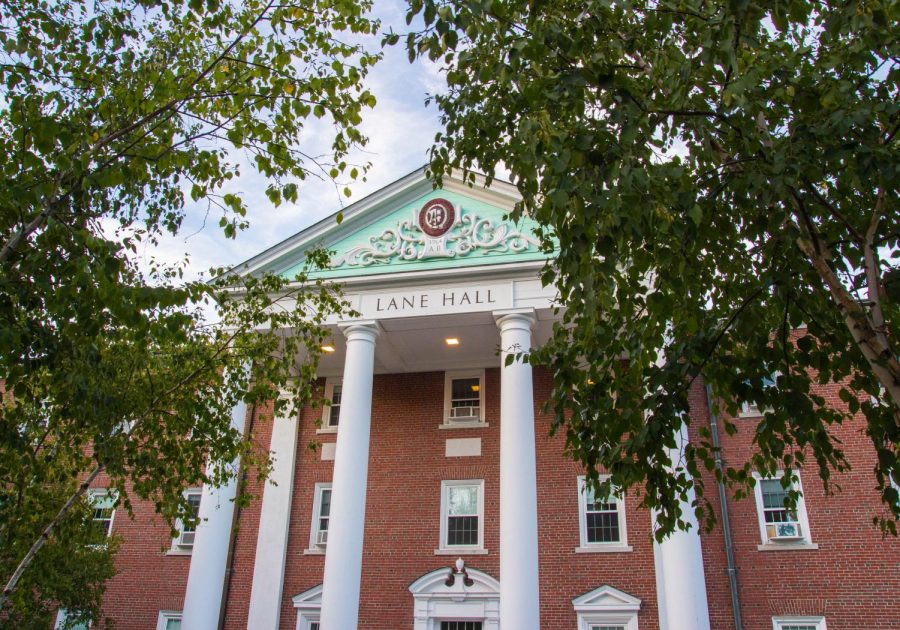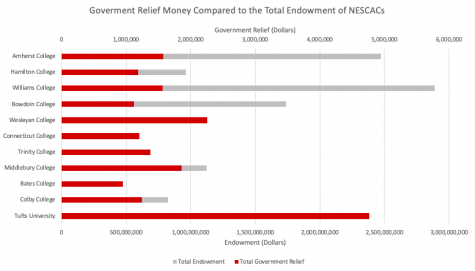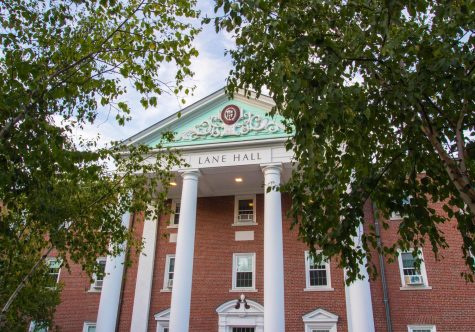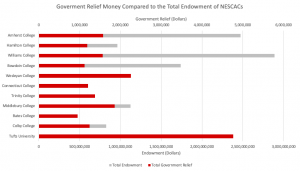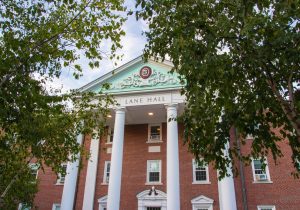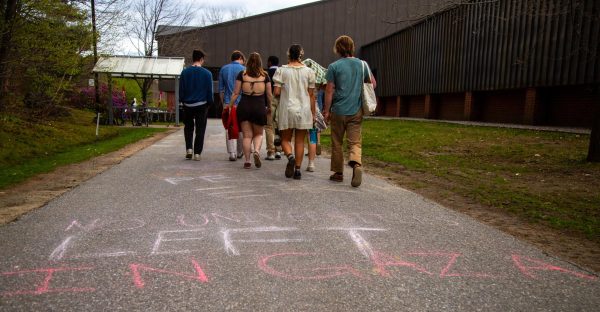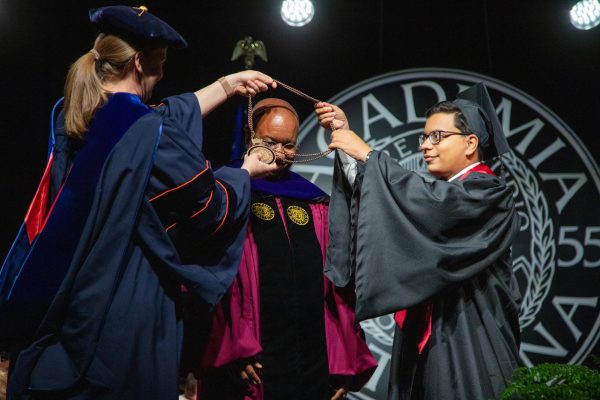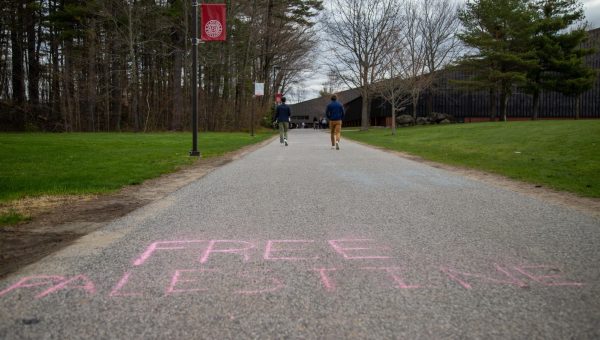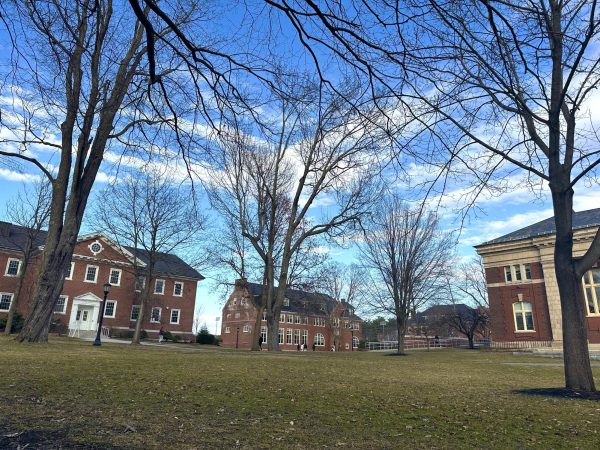Bates Contributes to Retirement Funds, Raises Minimum Wage due to Improved Financial Situation
College attributes its favorable finances to high fall enrollment, cautious fiscal policies, and record fundraising
Bates College is in a better financial position now than previously predicted.
On April 27, President Clayton Spencer published a statement summarizing the financial impact of COVID-19. This message detailed various cost-cutting measures the college would implement in preparation for a financially uncertain future, including the suspension of employee retirement contributions, freezing staff salaries, and a voluntary reduction in salary for members of the senior staff.
At the time, Spencer predicted a net loss of $3 million in income for the college by the end of the summer. She also expressed concern for the endowment which suffered losses in the first quarter of the year.
Moreover, Bates had no clear idea of what enrollment in the fall would look like. Student fees are the largest source of income for the college and make up a significant portion of the operating budget.
However, more students enrolled than expected this fall, and the market improved sufficiently for the endowment to grow more than $10 million from fiscal year (FY) 2019 to FY 20 (fiscal years end on June 30).
With its cautious approach to finances and the successful completion of the fall semester in sight, Bates now finds itself with greater financial assets than previously anticipated.
Spencer released an update on Bates’ financial status, announcing a raise for some hourly staff and a one-time retirement contribution for employees, in a statement released on Nov. 12.
Yet, Bates’ financial security remains uncertain. The Bates community again finds itself unsure if or when students will be able to return to campus in the winter semester as COVID-19 cases reach record levels and some state governments restore lockdown policies.
Fall Expenditures & Income
Bates’ financial position benefitted from the income received as a result of high student enrollment, a positive return on investment from the endowment, and cautious financial policies.
Joshua McIntosh, vice president for campus life, said in a student Q&A on Nov. 17 that as of Nov. 6, 1,688 students were studying on campus and 181 were studying remotely. In fall 2019, 1,820 students were enrolled.

(Bates College website)
Due to the pandemic, many students were unable to study abroad as previously planned and instead studied on campus. Just 17 students studied abroad this fall in comparison to 129 last year. Students studying abroad pay tuition to their host universities and programs instead of Bates.
Furthermore, the endowment grew by almost 3.5% from FY19 to FY20 to $342 million. The investment income was lower in FY20 than FY19 ($1.3 million vs. $3.8 million) due to depressed markets, but returned a net increase nonetheless, given that change in the endowment occurs due to losses or gains from investments, operational costs, and new gifts.
In her November statement, Spencer noted that strong fundraising performance in FY20 was a significant boon for Bates’ finances. The college received a record $33.7 million in total gifts for FY20, almost $5 million more than in FY19 ($28.8 million).
Bates was also able to save money from cost-cutting measures, including a hiring freeze and careful monitoring of nonessential expenditures, resulting in “savings from operational budgets across the college,” the statement noted.
The college additionally benefitted this year from two federal stimulus programs. Bates received almost $1 million from the federal Coronavirus Aid, Relief, and Economic Security (CARES) act which was used to provide aid to students. Vice President of Finance and Administration Geoffrey Swift said Bates was able to benefit from the Employee Retention Tax Credit.
However, he also shared that Bates was ineligible for the Paycheck Protection Program (PPP), which was largely only accessible to organizations with less than 500 employees.
There were also significant pandemic-related costs, of course. Swift noted that by the year’s end, the college had incurred at least $6 million in COVID-related expenses, including $2 million spent on the extensive testing regime this fall.
Bates also paid the Hampton Inn to house excess students, though the costs of this expense is not publicly known. By the end of September, most students previously housed in the hotel had moved on-campus as vacancies opened, but Bates expects it will once again need to put students in the Hampton Inn for the winter semester.
Pay Raise & One-time Retirement Contribution
The minimum wage for Bates employees was raised to $13.50 per hour, effective Nov. 22. Prior to this pay raise, the minimum hourly wage employees made was largely $12.75 an hour, with “a few” earning $12.00, according to Swift.
Due to a need to mitigate compression – the way in which a universal minimum pay increase can cause employees who have been in their position longer to be making the same amount of money as a brand new employee – some employees who already made $13.50 saw pay increases as well.
Swift shared that a few employees who have been at Bates longer term were given “notable increases” that he believes will be meaningful in the current economy.
“The good news is we’ve been moving wages up steadily,” Swift said. “The bad news is we got a whole bunch of compression – you have people who’ve been here for a number of years and have experience in their role [but] are getting paid the exact same amount as somebody who’s been here for one day. We didn’t think that was the right outcome. So, our benefits and compensation team in human resources looked at it and came up with a rubric that could be applied consistently and fairly.”

Retirement benefits were suspended for FY21 due to the COVID-19 pandemic’s effects on the college’s finances. Swift said these benefits were deemed less immediately consequential than wages used for groceries, rent, and other more pressing expenses to employees.
Months after Spencer’s announcement that retirement contributions would be suspended, Bates is making a one time payment in December to reinstate half of the annual core retirement benefits that employees did not receive.
Normally, employees can receive up to a 12% annual retirement contribution. Nine percent comes from wages earned, and three percent is added to that core benefit in matching from Bates.
This payment will be made to the 403(b) plan, one of the retirement plans available to employees, as it is the most flexible for Bates to make changes to.
Speaking on the future of employee benefits, Swift shared that he would “hope” Bates is able to resume contributions in FY22, however a decision has not yet been made, as the future of the pandemic is unknown.
Swift emphasized the importance of the hourly wage increase, stating that such measures “don’t lend themselves to headlines the way the retirement contribution does.” By his estimation, the one-time payment to the 403(b) plan will amount to around $2.5 million total contribution from the college, but he believes that raising the minimum hourly wage will have more of an important effect on the college and employees.
Swift feels there is still work to be done on compensation, but said he is “proud of the strides [they] have made” by “moving up wages steadily.”
Bates’ Financial Future Remains Uncertain
Despite the success of the fall, Bates is not out of the woods yet. While the students and administration were able to navigate through this semester, the quickly approaching winter will provide its own set of challenges, leaving Bates in an uncertain financial position for the foreseeable future.
Swift minced no words when it came to the differences between the fall and winter semesters. “What’s novel in September and works in November is much more difficult in January and February,” he said.
As a result of these uncertainties, many students are evaluating their options about whether to return to campus, study remotely, or take a leave of absence in January.
During the recent Q&A, McIntosh stated that 1,794 students had expressed intent to return to study on-campus, and 89 said they would study remotely in the winter semester. These numbers are comparable to the high enrollment Bates saw this fall.
The on-campus experience this fall was different, to say the least, and those unsatisfied with the experience may choose to take a leave of absence or study remotely for the winter.
“We have a sense of what people want to do, [but] are people going to change their mind?” Swift said.
This alone causes significant alterations to the budget projections. If Bates is unable to allow students to return in January – or potentially even at all for the winter – then Bates will have to issue room and board refunds, which would place additional unpredicted strain on Bates’ financial situation.
Based on last school year’s financial statements, if students were not able to return to campus in the winter, Bates could lose around a tenth of their net revenue due to losses in room and board fees, according to calculations made by The Bates Student. Conversely, operating costs would be much lower, but Bates would still have employees to pay. This is Bates’ most significant annual cost.
However, this is a worst case scenario, as the college has said it would first look to delay student return rather than not allow them to return entirely, which would soften – though not nullify – the financial blow of refunds.
Approximately 70% of Bates’ annual revenue can be accounted for by students’ single fee, and anything that could affect that revenue combined with the increased costs from this year could potentially be damaging to the college’s financial position.
Even if students are able to – and choose to – return, the winter semester poses new and greater challenges for preventing outbreaks on campus.
Bates and its administration finds itself at the mercy of the coronavirus, as well as mandates from the local, state, and federal governments. Potentially, Maine Governor Janet Mills could prohibit college students from returning to Bates as cases continue to worsen within the state, throwing the college’s financial state into flux.
However, there has been no indication that the state government has or will consider this.
It is also possible President-elect Joe Biden could also issue new lockdown policies which would prevent Bates students from returning in January. Any number of potential issues still exist and could leave Bates’ future in jeopardy.
And while Bates is unsure whether it will be able to welcome students back on campus or for how long, financial planning must already begin. This may include facilitating the distribution of the vaccine if it becomes available.
Will Bates have to cover the potential costs of issuing vaccines? Will students have to be vaccinated in order to return to campus next year? Or will testing capabilities be vastly improved, thus putting off the need for students at relatively minimal risk to get the vaccine in the first place?
All of these things, according to Swift, are difficult to predict, but must be considered when planning for Bates’ financial future, which remains uncertain even past this fiscal year.
As a result of the pandemic, Bates could still see decreased revenue on top of increased costs incurred by things like Covid testing, operation of the testing center, ‘corona-proofing’ of campus, among other potential costs.
“I would hope the incremental costs in future years will be lower, but I can’t imagine they go to zero,” Swift said of the costs incurred by the college during the pandemic.
No matter how financially successful this year has been, the college will be dealing with the fallout from the pandemic for a number of years to come. This is frustrating for everyone who wants to see Bates continue to grow, but the survival of the institution and its community through the pandemic cannot be taken for granted.
Your donation will support the student journalists of Bates College and help us cover our annual website hosting costs.

Vanessa Paolella '21 was the editor in chief of The Student during the 2020-21 academic year.
At Bates, she majored in geology with a strong interest...

Jackson Elkins is a senior from South Deerfield, Mass. He is a double major in Economics and European Studies with a minor in German Language and Culture....


